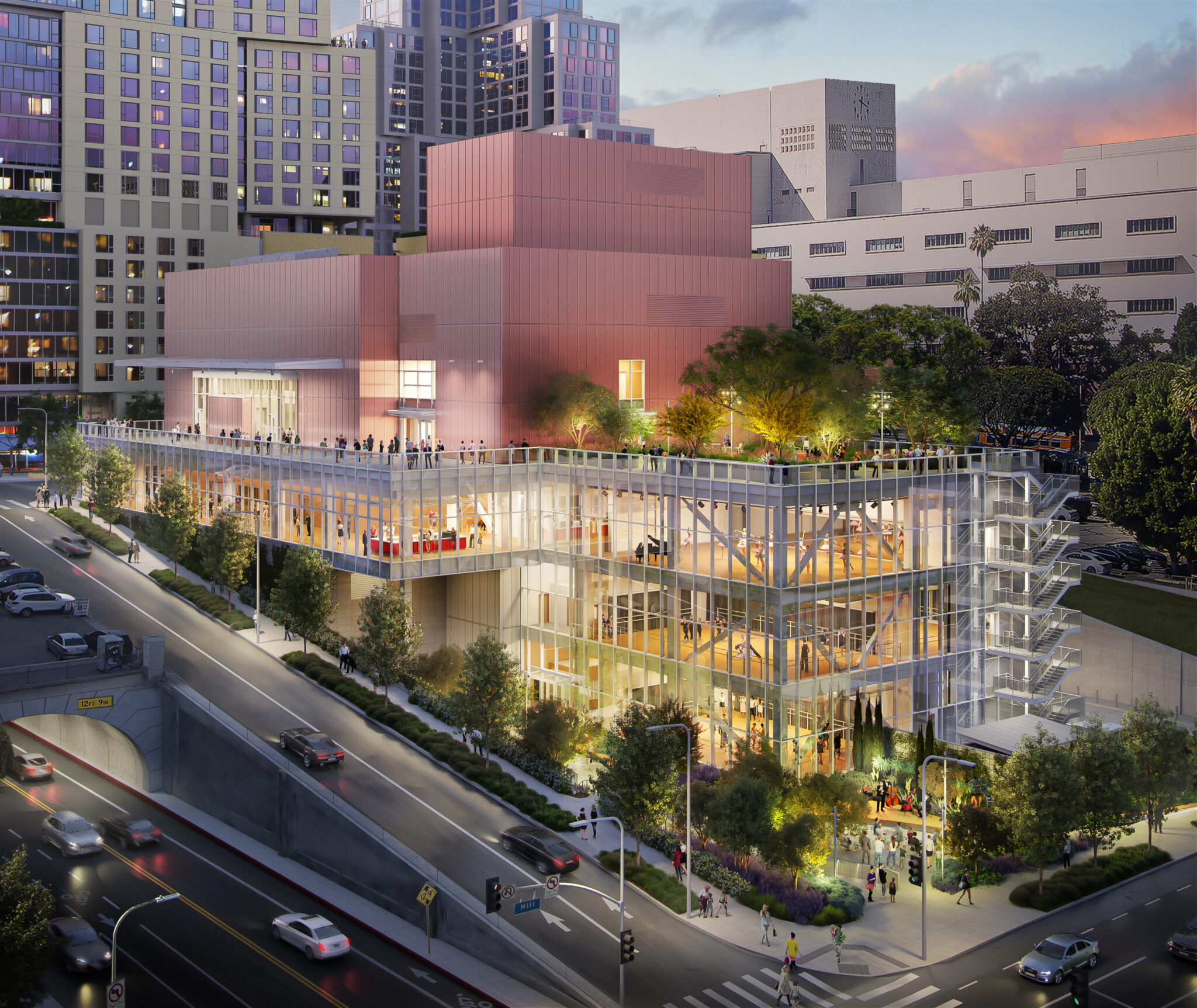In April, the Colburn School, an institute for music and dance education and performance, will break ground on a 100,000-sf expansion designed by architect Frank Gehry. Located in downtown Los Angeles, the performing arts center will join the neighboring Walt Disney Concert Hall and The Grand by Gehry, forming the largest concentration of Gehry-designed buildings in the world.
“This has been a long time in the making. The Colburn School expansion is a much-needed project for the community,” famed architect Frank Gehry said in a press statement. “I hope that it will be well-used and well-loved by the students of the Colburn School and the other cultural institutions of Los Angeles.”
The Colburn School provides music and dance education at all levels of development, from children as young as 7 months old to adults. Each week, the downtown L.A. campus welcomes about 10,000 people, and each year, over 2,000 students from around the world study at Colburn.
The new building, the Colburn Center, will be adjacent to Colburn’s Grand Avenue campus. In addition to training and performance facilities for music and dance, the Colburn Center will provide a concert hall for the region’s performing arts organizations—downtown L.A.’s first midsized concert hall, according to the Colburn School. The 1,000-seat, 17,200-sf hall will feature an in-the-round design, an orchestra pit, and a stage that can accommodate large-scale works.
Frank Gehry hopes to strengthen L.A.’s classical music community
“Our goal for this hall is that it will help strengthen the already robust classical music community here, solidifying Los Angeles’ leadership in this arena,” Gehry said.
The Colburn Center will more than double the facilities for the school’s Trudl Zipper Dance Institute, including a 100-seat theater for dance and four professional-sized studios for dance instruction and rehearsal.
The building’s new rooftop garden will be large enough for receptions and outdoor performances, while a ground-level garden will have a performance space that will be open to the public.
According to the press statement, Gehry’s design is “conceived as an ensemble of interlocking volumes, each of which houses a distinct program while interacting dynamically with the whole, the new Colburn Center will be built into a terrain that slopes down from Olive Street to Hill Street and clad in a pink metallic finish. The components are knit together by an expansive light-filled entrance and a pair of gardens planted at street and rooftop level.”
To date, gifts to the Colburn School total about $315 million toward its $400 million Building Our Future campaign. The campaign will cover about $335 million in construction costs and $65 million in endowment and operating costs for the Colburn Center and the Colburn School.
The performing arts center is expected to reach substantial completion in early 2027.
On the Building Team:
Owner: The Colburn School
Architect: Gehry Partners
Civil engineer: KPFF
MEP engineer: ARC Engineering
Structural engineer: Magnusson Klemencic Associates
Contractor: McCarthy
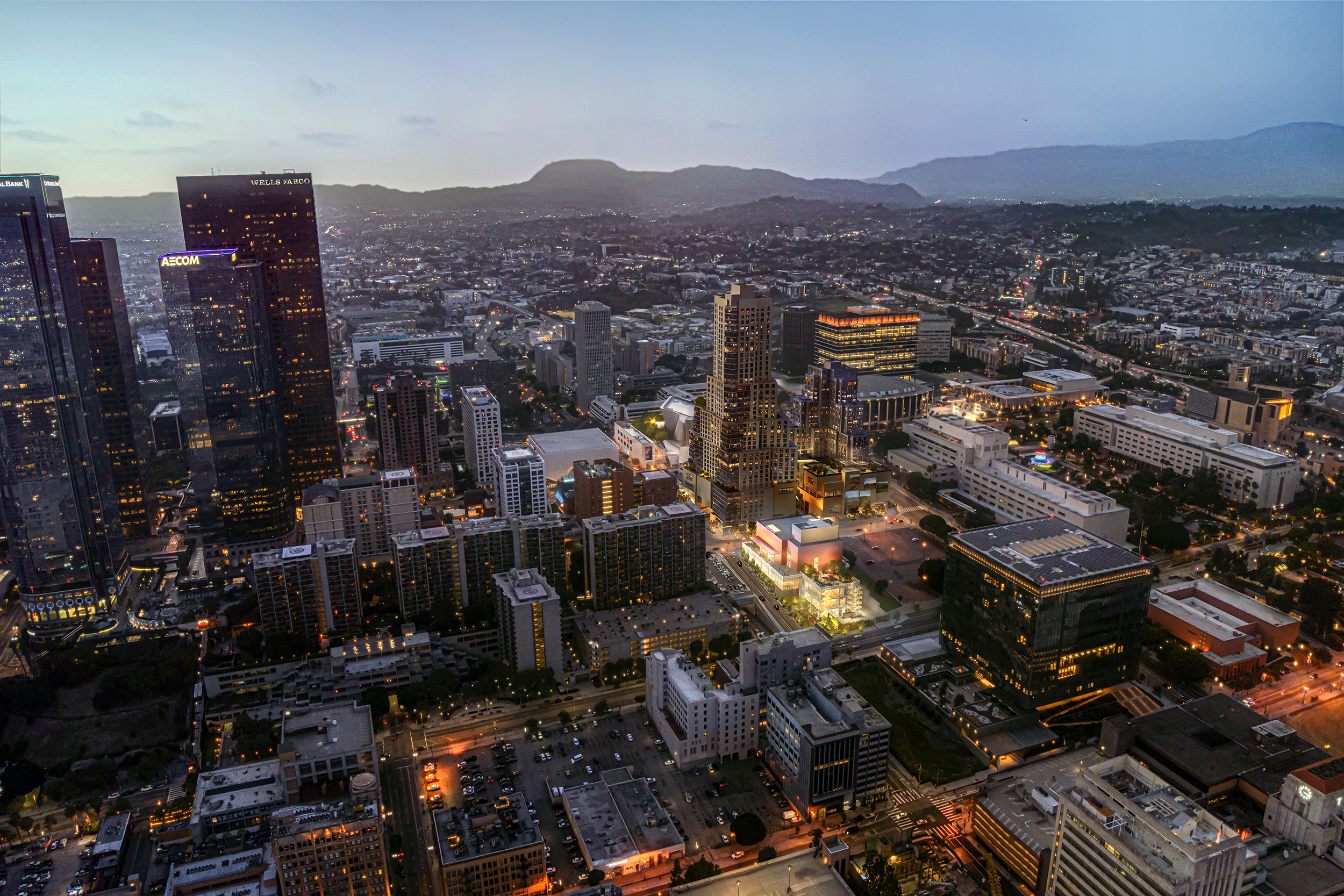

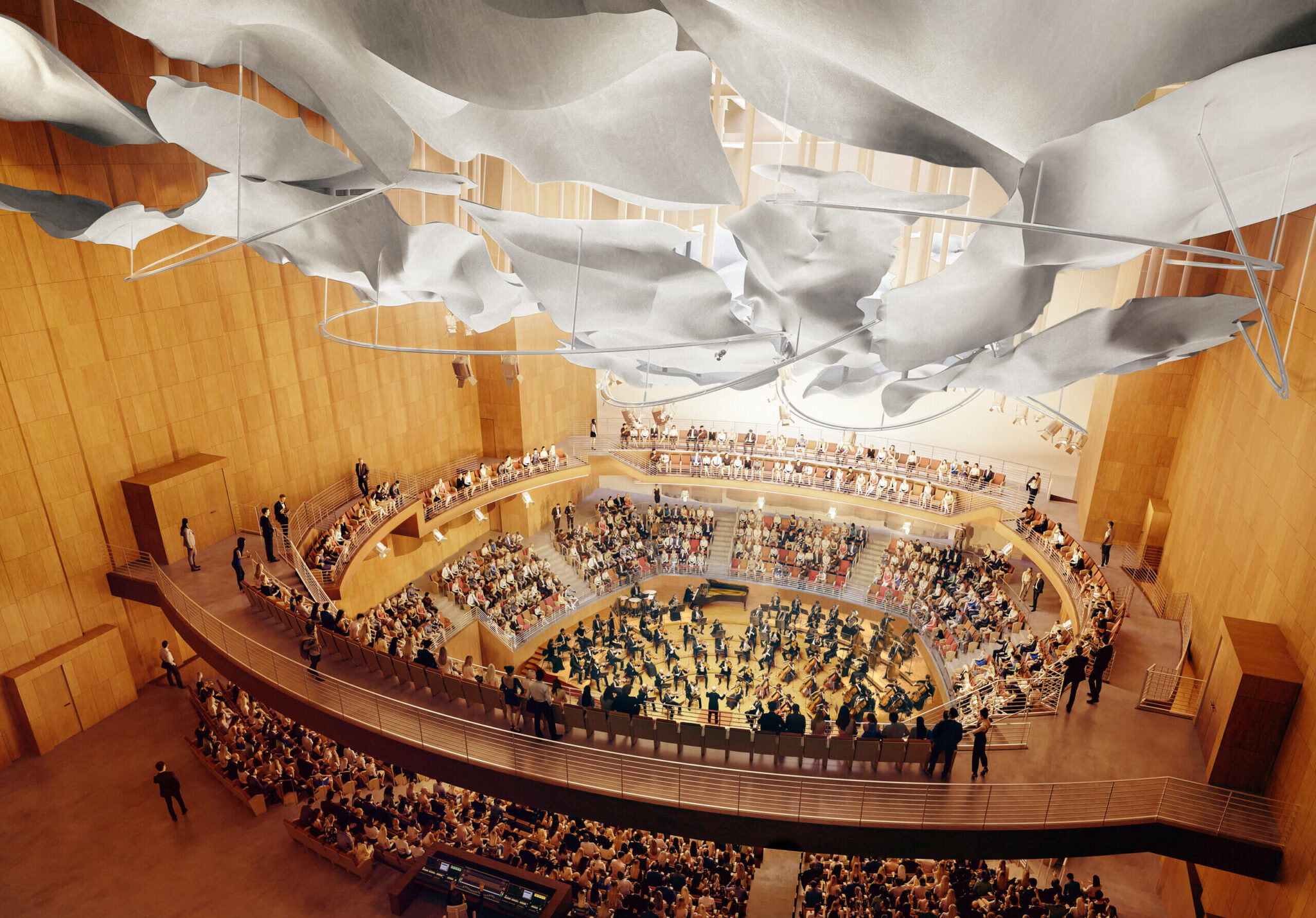
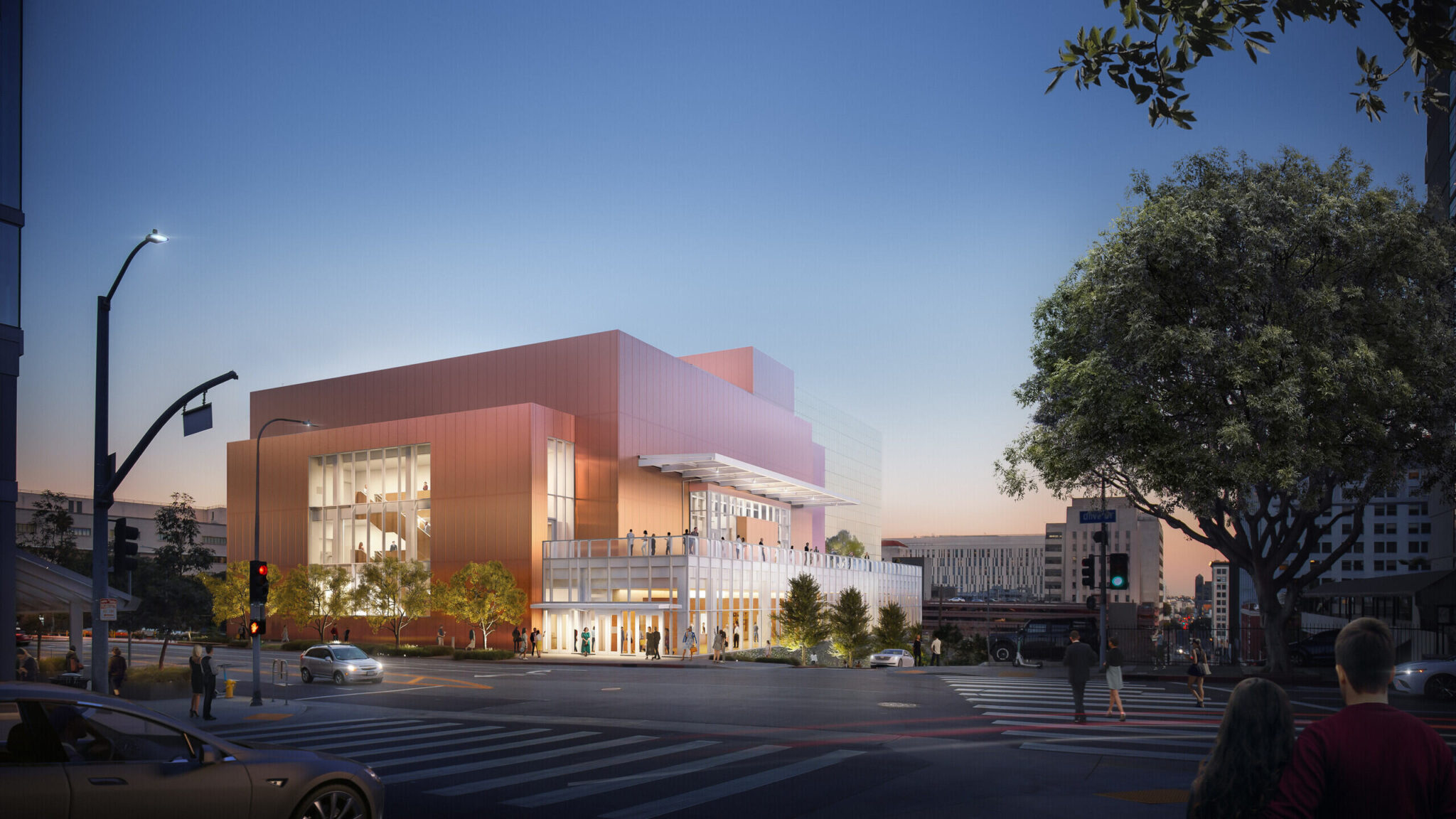
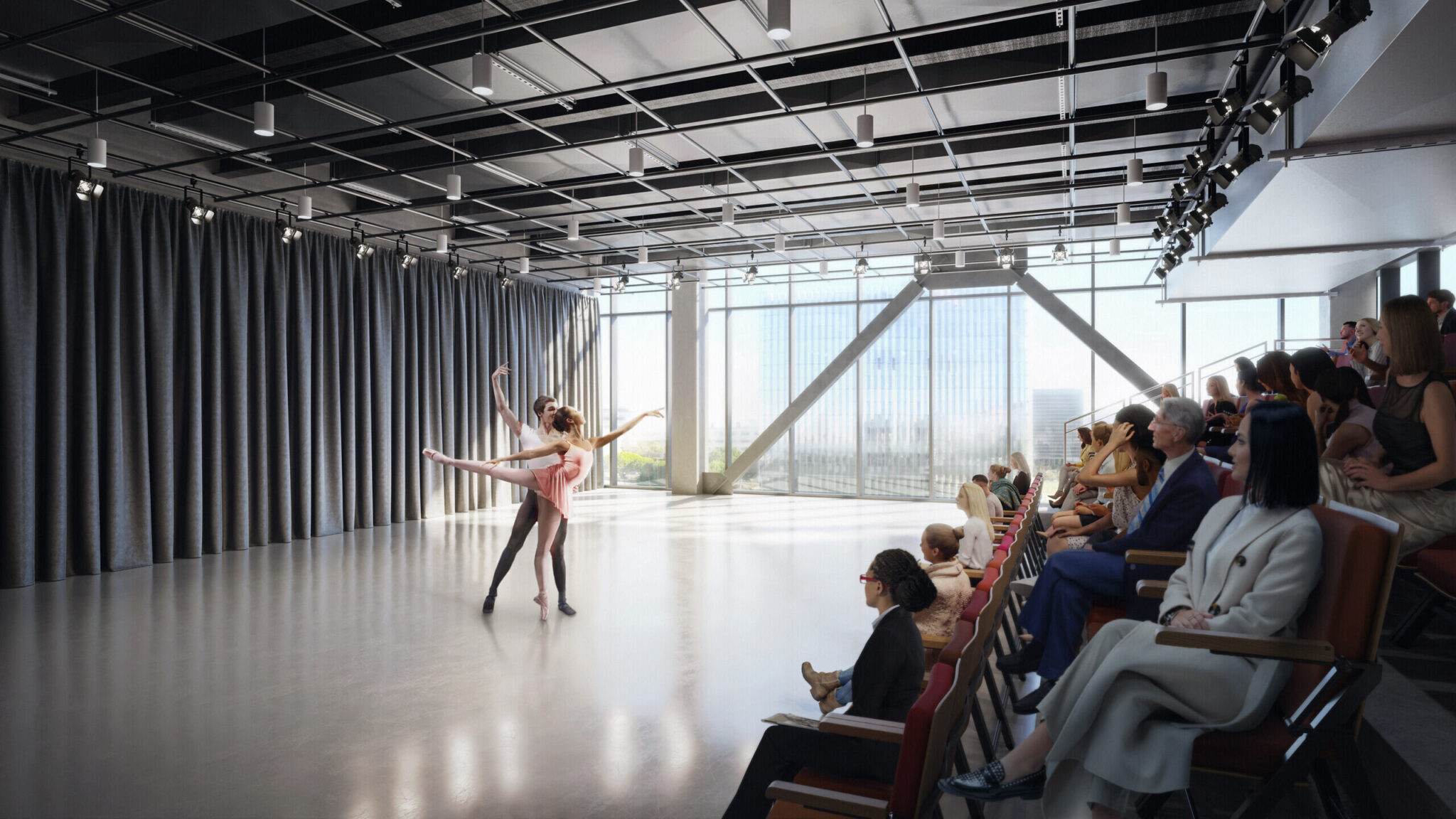


Related Stories
| Aug 11, 2010
Giants 300 University Report
University construction spending is 13% higher than a year ago—mostly for residence halls and infrastructure on public campuses—and is expected to slip less than 5% over the next two years. However, the value of starts dropped about 10% in recent months and will not return to the 2007–08 peak for about two years.
| Aug 11, 2010
Bowing to Tradition
As the home to Harvard's Hasty Pudding Theatricals—the oldest theatrical company in the nation—12 Holyoke Street had its share of opening nights. In April 2002, however, the Faculty of Arts and Sciences decided the 1888 Georgian Revival building no longer met the needs of the company and hired Boston-based architect Leers Weinzapfel Associates to design a more contemporary facility.
| Aug 11, 2010
Team Tames Impossible Site
Rensselaer Polytechnic Institute, the nation's oldest technology university, has long prided itself on its state-of-the-art design and engineering curriculum. Several years ago, to call attention to its equally estimable media and performing arts programs, RPI commissioned British architect Sir Nicholas Grimshaw to design the Curtis R.
| Aug 11, 2010
Silver Award: Hanna Theatre, Cleveland, Ohio
Between February 1921 and November 1922 five theaters opened along a short stretch of Euclid Avenue in downtown Cleveland, all of them presenting silent movies, legitimate theater, and vaudeville. During the Great Depression, several of the theaters in the unofficial “Playhouse Square” converted to movie theaters, but they all fell into a death spiral after World War II.
| Aug 11, 2010
Biograph Theater
Located in Chicago's Lincoln Park neighborhood, Victory Gardens Theater Company has welcomed up-and-coming playwrights for 33 years. In 2004, the company expanded its campus with the purchase of the Biograph Theater for its new main stage. Built in 1914, the theater was one of the city's oldest remaining neighborhood movie houses, and it was part of Chicago's gangster lore: in 1934, John Dillin...
| Aug 11, 2010
Platinum Award: Reviving Oakland's Uptown Showstopper
The story of the Fox Oakland Theater is like that of so many movie palaces of the early 20th century. Built in 1928 based on a Middle Eastern-influenced design by architect Charles Peter Weeks and engineer William Peyton Day, the 3,400-seat cinema flourished until the mid-1960s, when the trend toward smaller multiplex theaters took its toll on the Fox Oakland.


